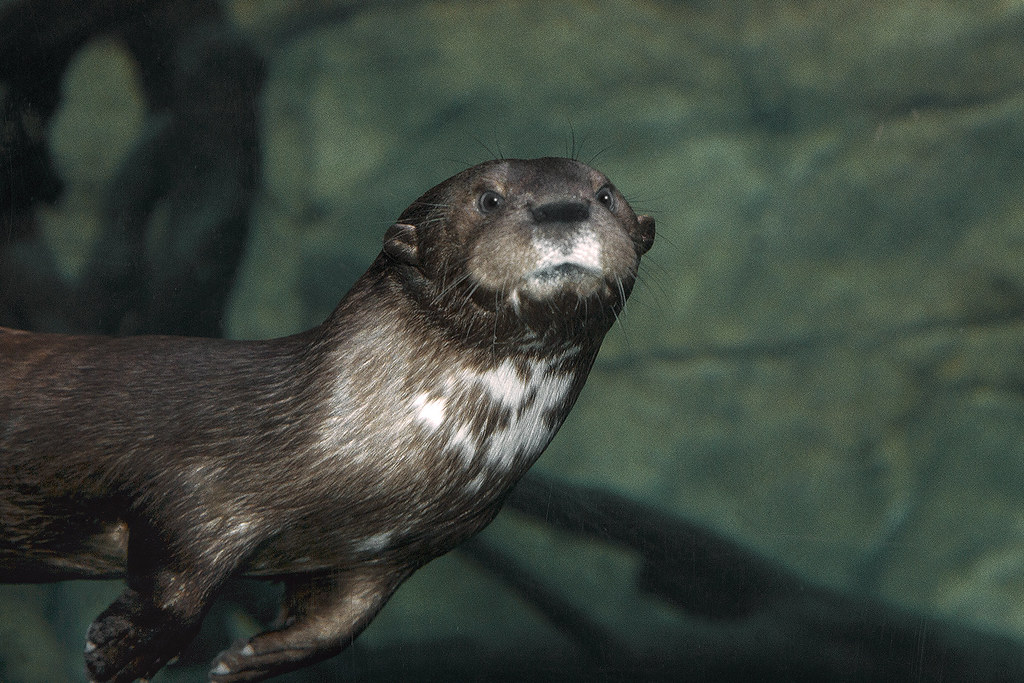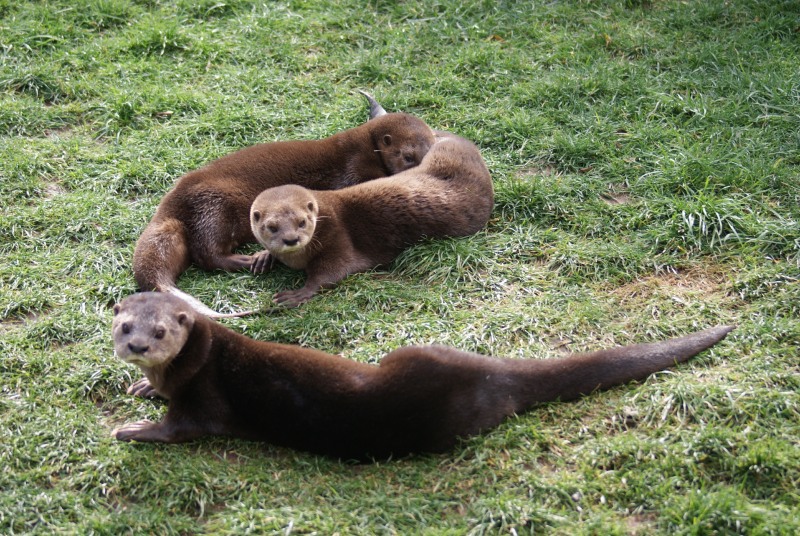
The spotted-necked otter (Hydrictis maculicollis), or speckle-throated otter, is an otter native to sub-Saharan Africa.

Up to five subspecies have previously been identified, these most likely represent a natural variation in appearance between individuals, and no subspecies are currently recognised.[3]
The spotted-necked otter is very vocal, uttering high, thin whistles and rapid, shrill chatters.[5] It sometimes lives in family groups, but appears to be social only under certain conditions. Males and females are separated for at least part of the year.[4] They normally hunt alone, except when mothers are training their young, and are not territorial, sheltering through the night in short burrows, rock crevices, or patches of dense vegetation. On land, they travel mainly over regular paths, and rarely move more than 10 m (33 ft) from river or lake banks.[3] Both mark these paths by "sprainting" sites, in which they habitually defecate and urinate.[6]

The spotted-necked otter is diurnal and appears to hunt entirely by sight using short dives of less than 20 seconds each in clear water with good visibility.[3] It carries larger prey ashore, but eats smaller prey while treading water.[6] It primarily eats fish, typically less than 20 cm (7.9 in) in length, but also frogs and small crustaceans, especially when fish is in short supply.[6]

The female bears a litter of up to three young after a gestation period around two months. The young are born blind and helpless, and the mother cares for them for almost a year.[5][3]
Known predators of the spotted-necked otter include lions, crocodiles and African fish eagles.[3]
The spotted-necked otter is in decline, mostly due to habitat destruction and pollution of its clear-water habitats. It is hunted as bushmeat.[2]




Distribution of spotted-necked otter




No comments:
Post a Comment
Note: Only a member of this blog may post a comment.